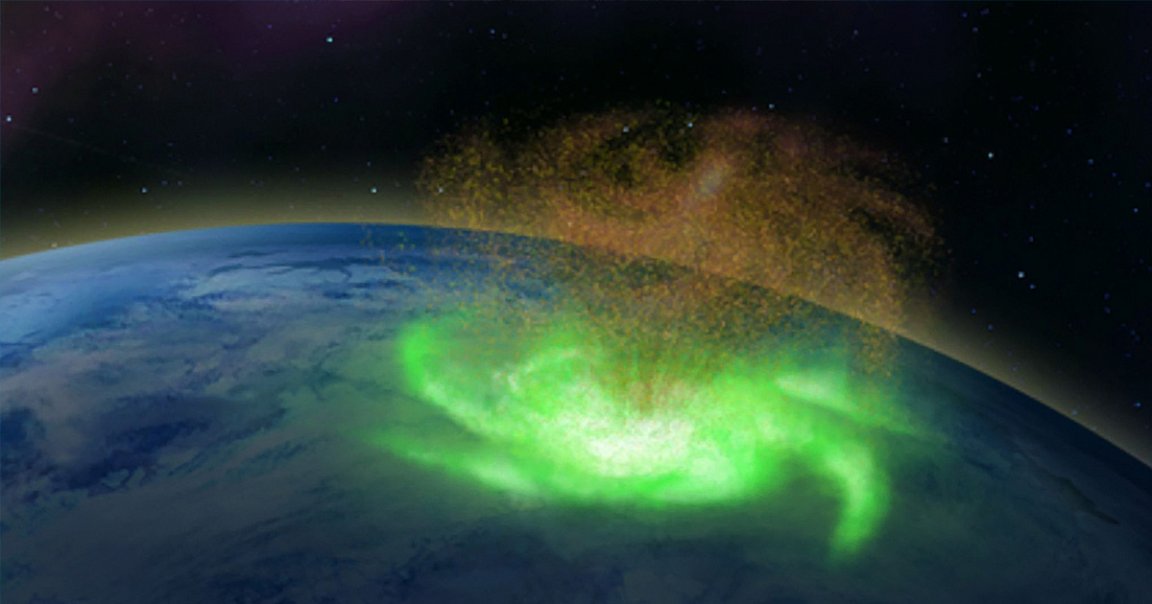
Space Hurricanes
A team of scientists have confirmed the existence of a gigantic, 1,000 kilometer-across “space hurricane” swirling hundreds of kilometers above the North Pole, the BBC’s Science Focus reports.
The team analyzed data in the form of low geomagnetic activity over the North Pole dating back to 2014. What they found was something truly awe-inspiring: an anticlockwise spinning vortex that spewed electrons down at our planet’s upper atmosphere for eight long hours.
The new research could help scientists better predict space weather, disturbances in our space environment usually caused by a stream of plasma coming from the Sun that are also referred to as solar winds.
Swirling Plasma
Space hurricanes aren’t too dissimilar from their surface-based equivalents. They are marked by the release of massive amounts of energy, and feature a quiet center.
“This hurricane shows strong circular horizontal plasma flow with shears, a nearly zero-flow center, and a coincident cyclone-shaped aurora caused by strong electron precipitation associated with intense upward magnetic field-aligned currents,” the team, led by Shandong University in China, wrote in a paper [link] about the work published in the journal Nature Communications last month.
Striking Observations
Scientists suggest that such space hurricanes could be a universal phenomenon that could be found near any planets or moons that have magnetic fields.
“Until now, it was uncertain that space plasma hurricanes even existed,” University of Reading space scientist Mike Lockwood, who was not involved in the research, told Science Focus. “So to prove this with such a striking observation is incredible.”
Understanding these space weather phenomena is important to ensure that Earth- and orbit-based technologies can survive the onslaught of the Sun’s plasma. These events can wreak havoc on high frequency radio communications and GPS signals, so becoming better at predicting them can only strengthen our infrastructure.
READ MORE: ‘Space hurricane’ observed above the North Pole [Science Focus]
More on space weather: China Is Sending a Mission to Study the Sun